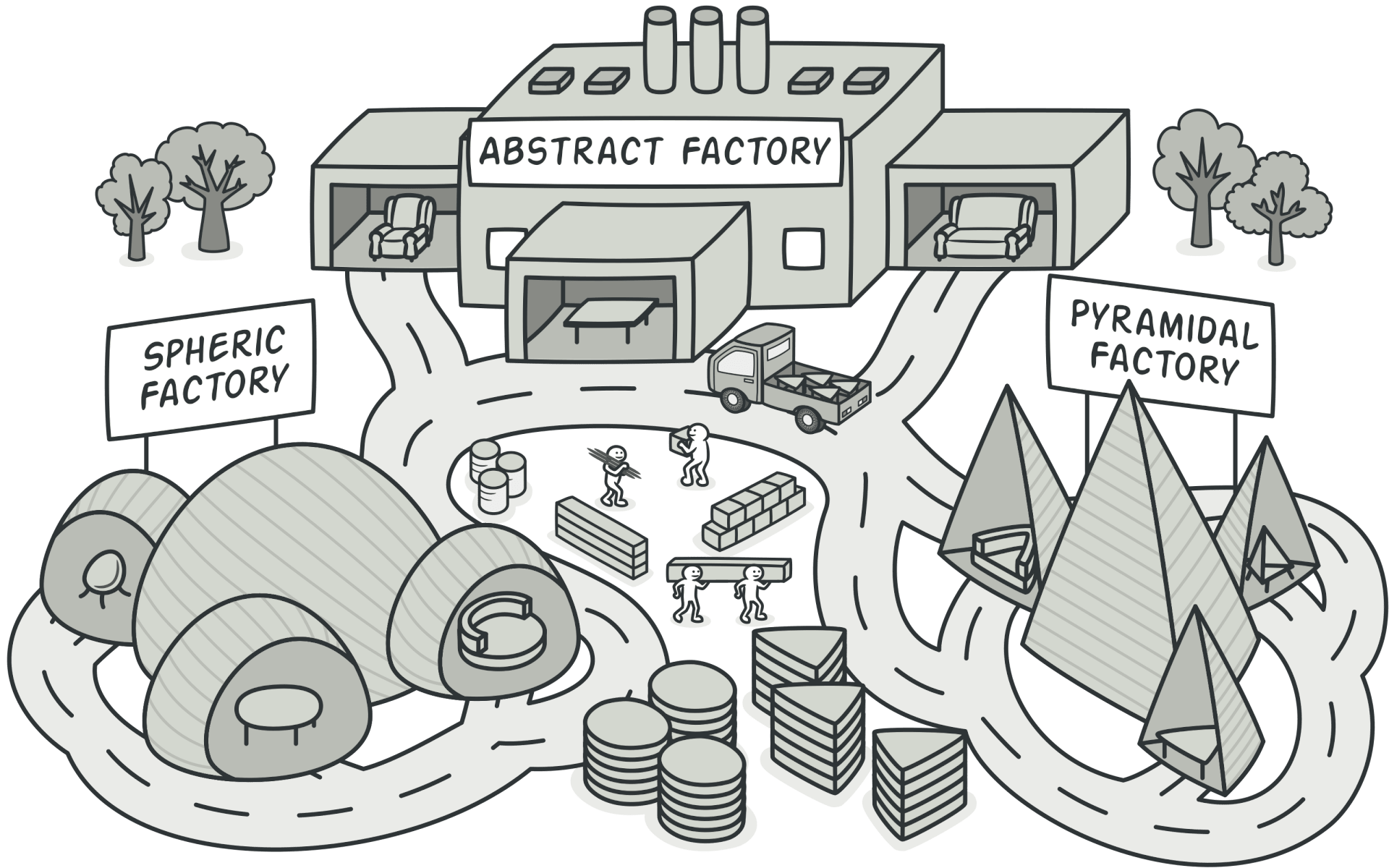Table Of Content

This operation doesn't require any change in the factory class code. The Factory Method defines a method, which should be used for creating objects instead of using a direct constructor call (new operator). Subclasses can override this method to change the class of objects that will be created. Then, using a SpaceshipFactory as our communication point with these, we'll instantiate objects of Spaceship type, though, implemented as concrete classes.
Behavioural Software Design Patterns in Java
The Factory Method pattern defines an interface for creating objects, but it allows subclasses to decide which class to instantiate. It encapsulates the object creation logic in a separate method, which can be overridden by subclasses to create different types of objects. This pattern is useful when we want to create objects that belong to a single family of classes and defer instantiation to their subclasses.
RESTful Remote Object Proxies with ProxyManager — SitePoint - SitePoint
RESTful Remote Object Proxies with ProxyManager — SitePoint.
Posted: Mon, 12 Sep 2016 07:00:00 GMT [source]
Not All Objects Can Be Created Equal
You can support new formats by implementing the Serializer interface in another class. The basic requirements for the example above are that you want to serialize Song objects into their string representation. It seems the application provides features related to music, so it is plausible that the application will need to serialize other type of objects like Playlist or Album. The creator returns the concrete implementation according to the value of the parameter to the client, and the client uses the provided object to complete its task. The ._serialize_to_json() and ._serialize_to_xml() methods are concrete implementations of the product. Once you have a common interface, you provide separate implementations for each logical path.
Concrete Creators
In the string conversion example, we demonstrated how the Factory Design Pattern allows us to switch between different conversion types easily. This pattern promotes modularity, extensibility, and code reusability, making it a valuable tool in software development. The Factory Method Pattern is a valuable tool in C++ for achieving flexible and extensible object creation mechanisms.
Factory Design Pattern Advantages
In the original example, you implemented the creator as a function. Functions are fine for very simple examples, but they don’t provide too much flexibility when requirements change. As a matter of fact, the Song class doesn’t even know the goal is to convert the data to a string. This is important because you could use this interface to provide a different kind of serializer that converts the Song information to a completely different representation if needed.

UML class diagram
It provides an interface for creating objects in a way that is convenient and flexible for software development. The factory design pattern is used when we have a superclass with multiple sub-classes and based on input, we need to return one of the sub-class. This pattern takes out the responsibility of the instantiation of a class from the client program to the factory class. Let’s first learn how to implement a factory design pattern in java and then we will look into factory pattern advantages. Note that this pattern is also known as Factory Method Design Pattern.
Creating an object often requires complex processes not appropriate to include within a composing object. The Factory Method and Abstract Factory are both creational design patterns used in object-oriented programming. The Factory Design Pattern in C++ involves using a base class or interface with a virtual method for creating objects. Derived classes can override this method to create different object types based on client requirements. This pattern promotes flexibility and extensibility by letting subclasses decide which class to instantiate. It simplifies object creation without needing to know specific types, making code modular and easier to maintain.
Once the user selects the credit card, we need to display the required information about that selected credit card. Let us first discuss achieving this without using the Factory Design Pattern in C#. Then, we will discuss the problems, and finally, we will create the same application using the Factory Design Pattern in C#. I build, lead, and mentor software development teams, and for the past few years I've been focusing on cloud services and back-end applications using Python among other languages. You know that this is not what happens because the Builder class keeps the initialized instance and returns it for subsequent calls, but this isn’t clear from just reading the code. An Object Factory gives additional flexibility to the design when requirements change.
However, this will lead to the create(AccountType type) method becoming increasingly bloated. AccountFactory is a class that implements the Factory design pattern. It uses the accountType to create the corresponding type of BankAccount. This approach separates the object creation from the implementation, which promotes loose coupling and thus easier maintenance and upgrades.
The implementation structure of ObjectFactory is the same you saw in SerializerFactory. Unless you have a very high percentage of code coverage with your unit tests, this is not a change that you should be doing. As software developers, we all want to write code that is easy to maintain, scalable, ... And it must all be put into a single place so that you don’t pollute the program with duplicate code.
Use the Factory to get object of concrete class by passing an information such as type. Create a Factory to generate object of concrete class based on given information. Patterns are a toolkit of solutions to commonproblems in software design. They definea common language that helps your teamcommunicate more efficiently.
No comments:
Post a Comment